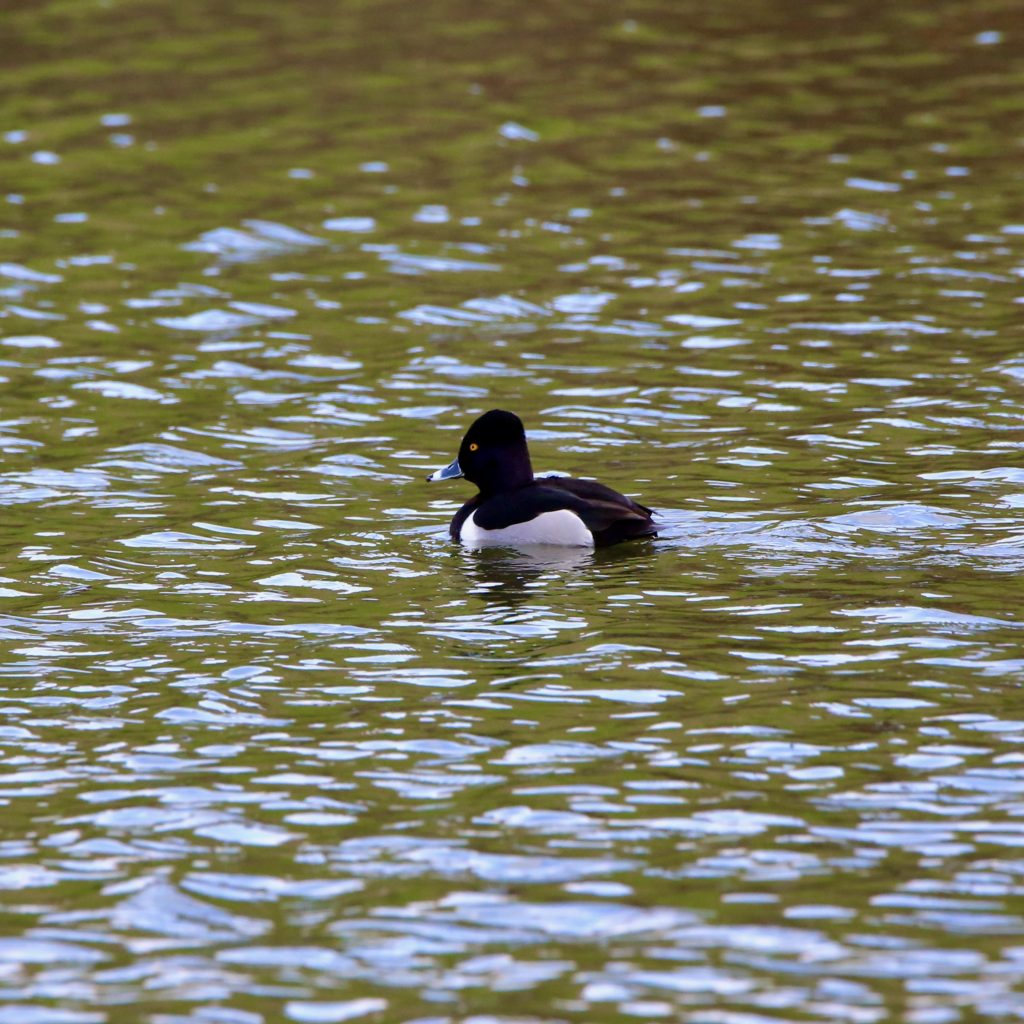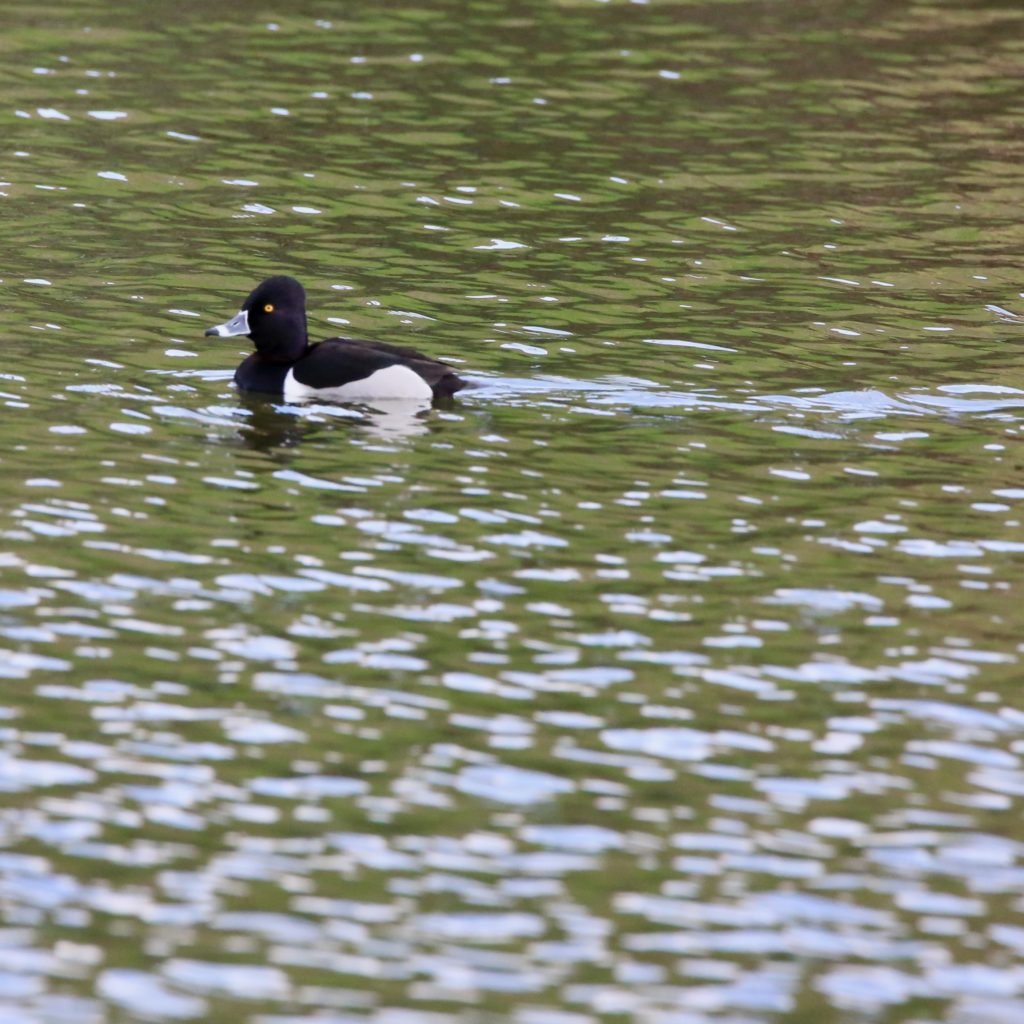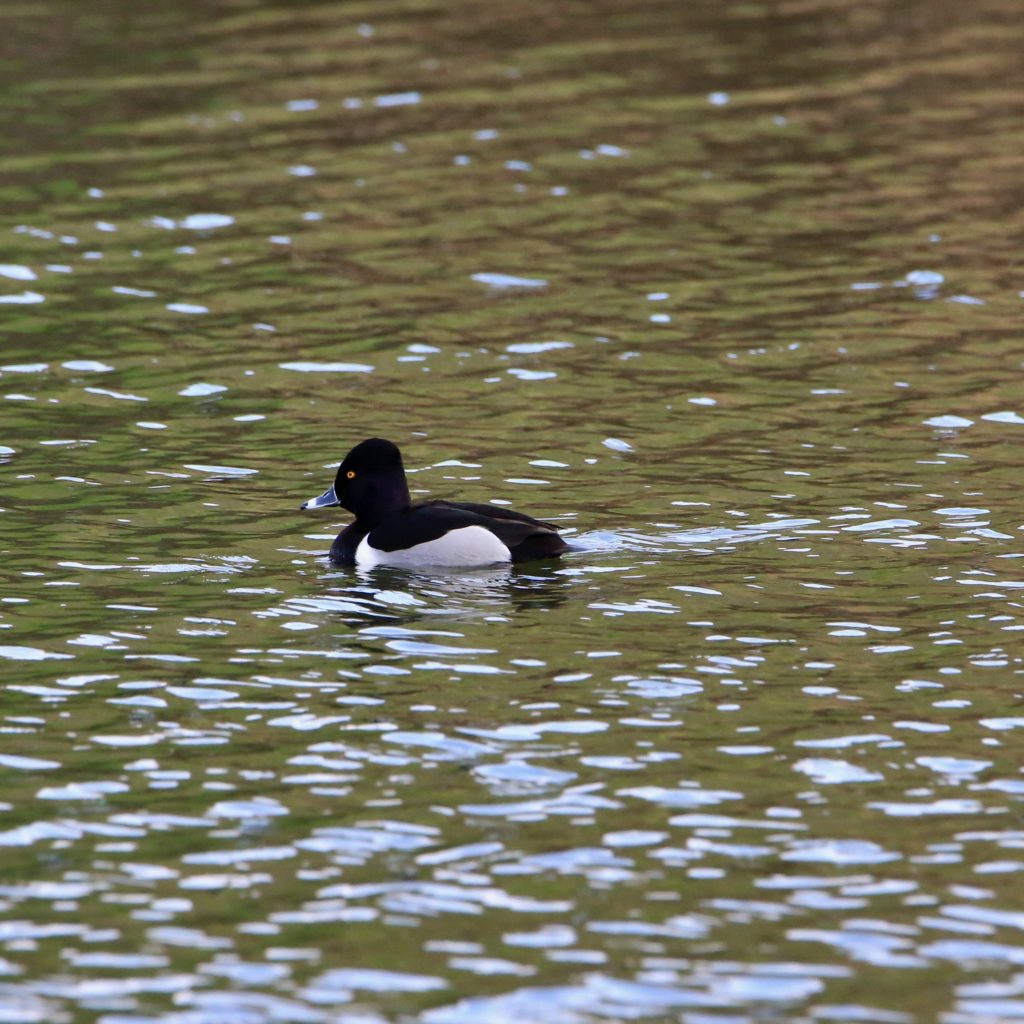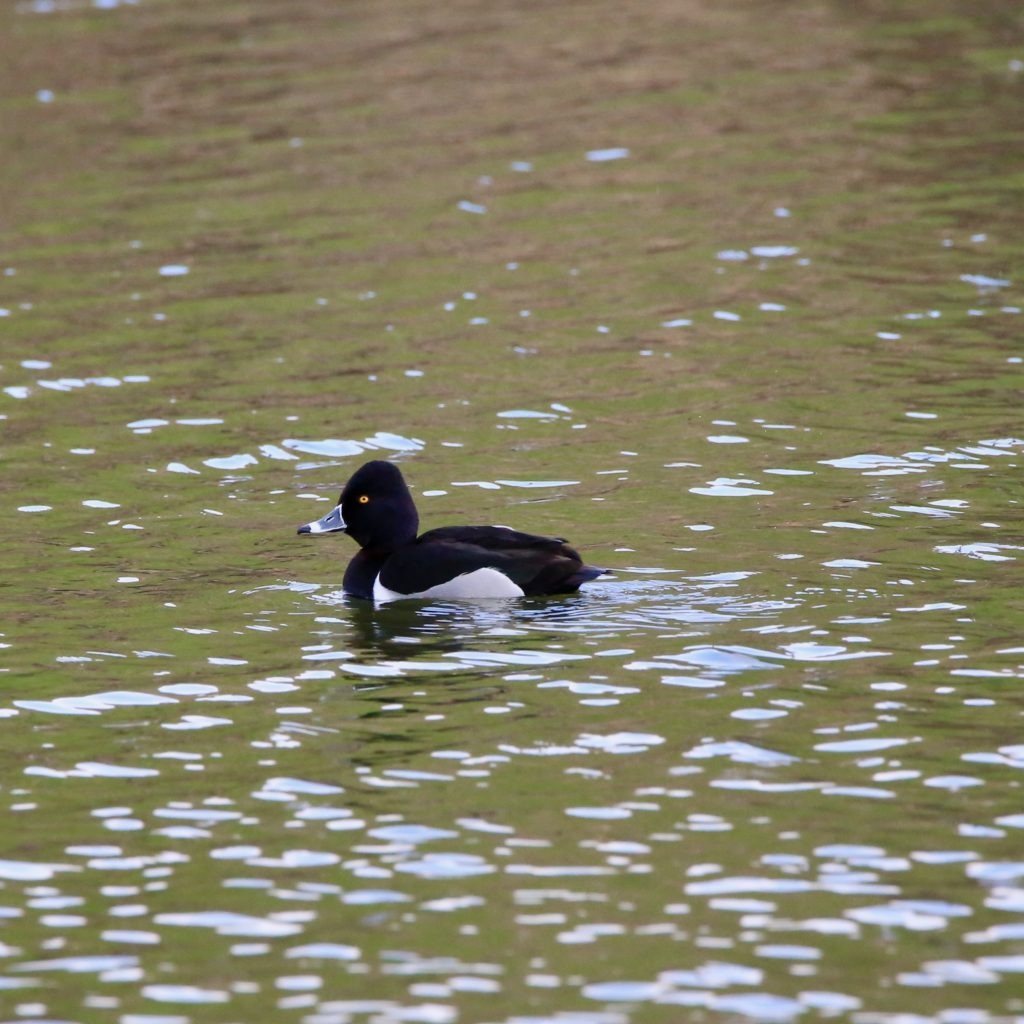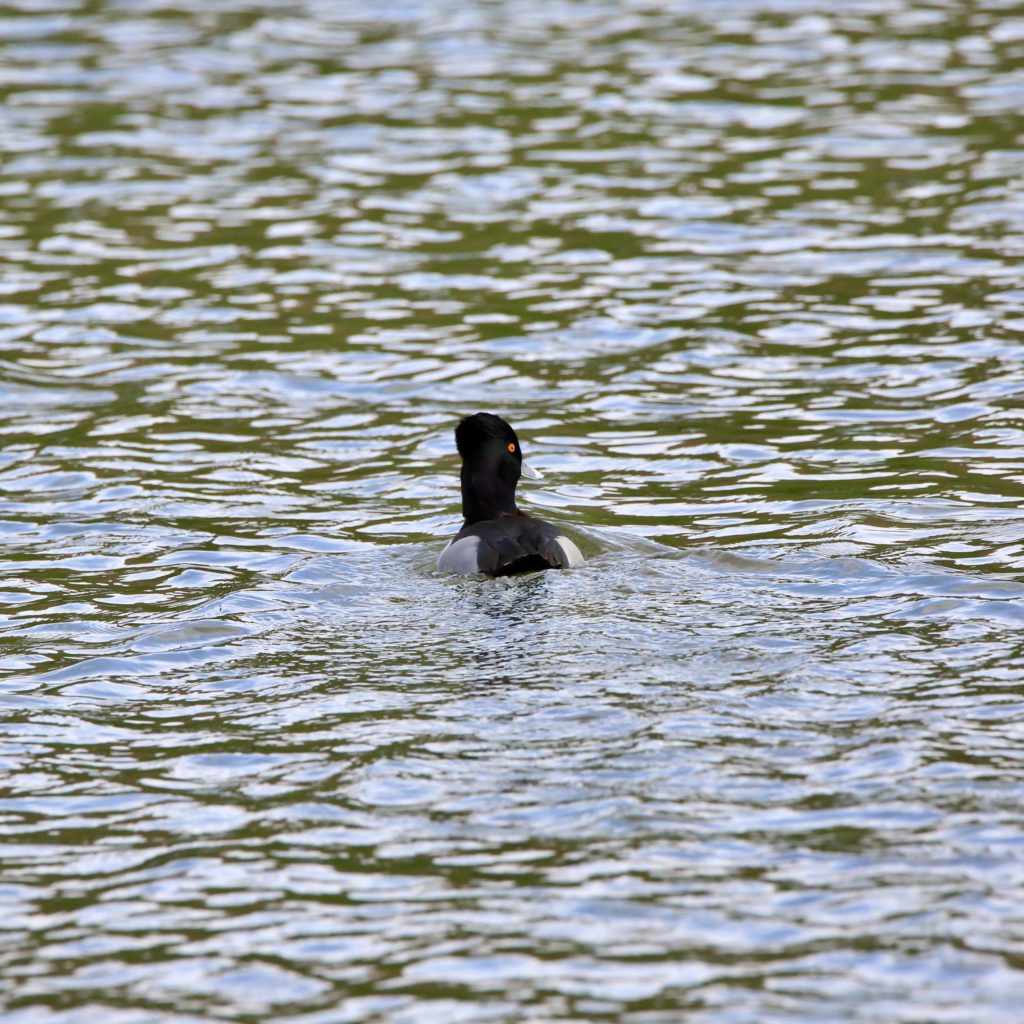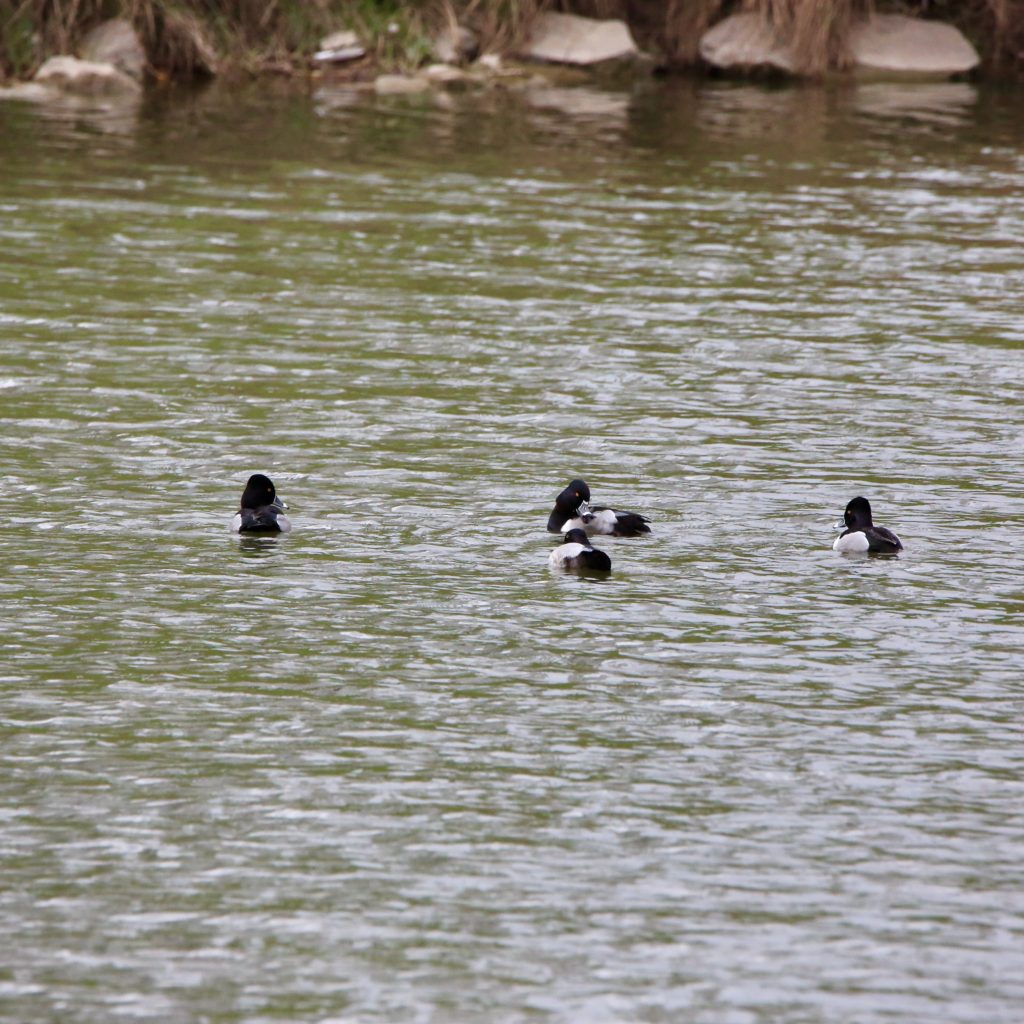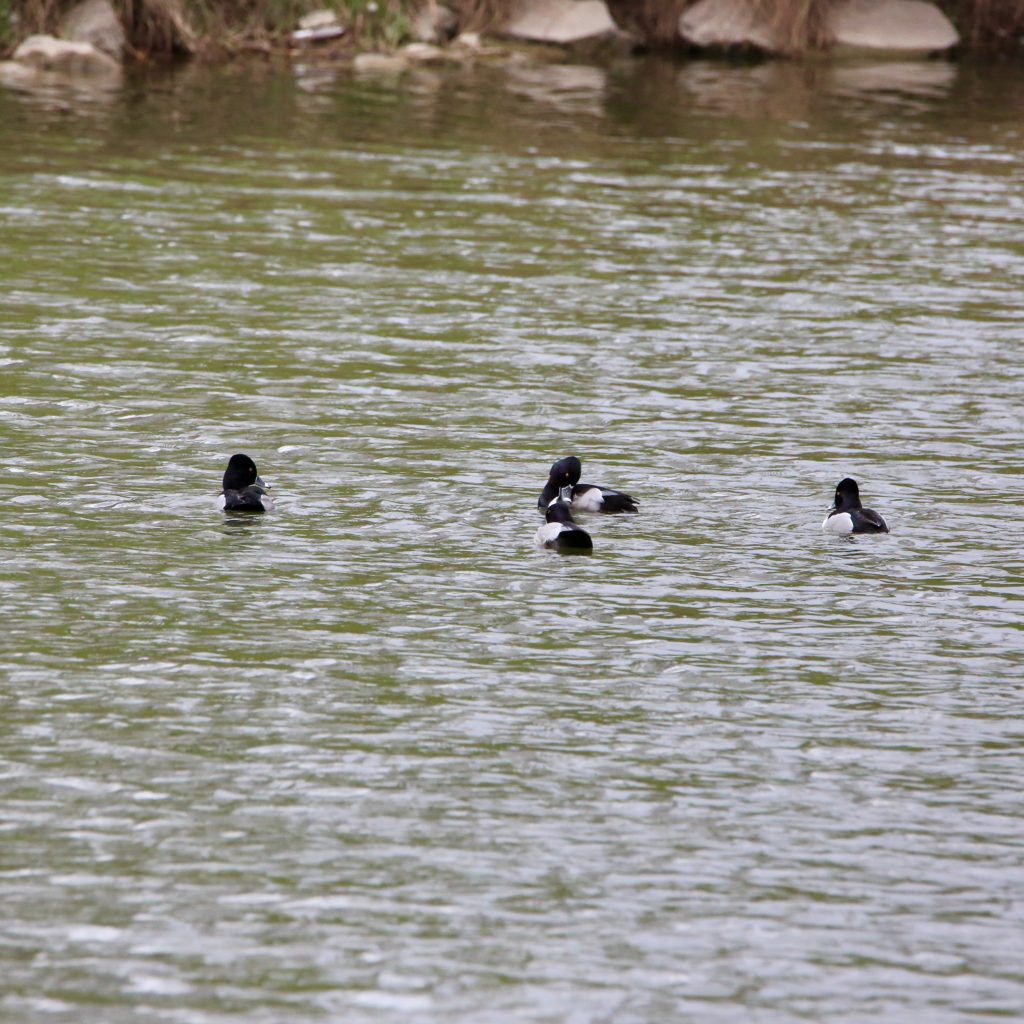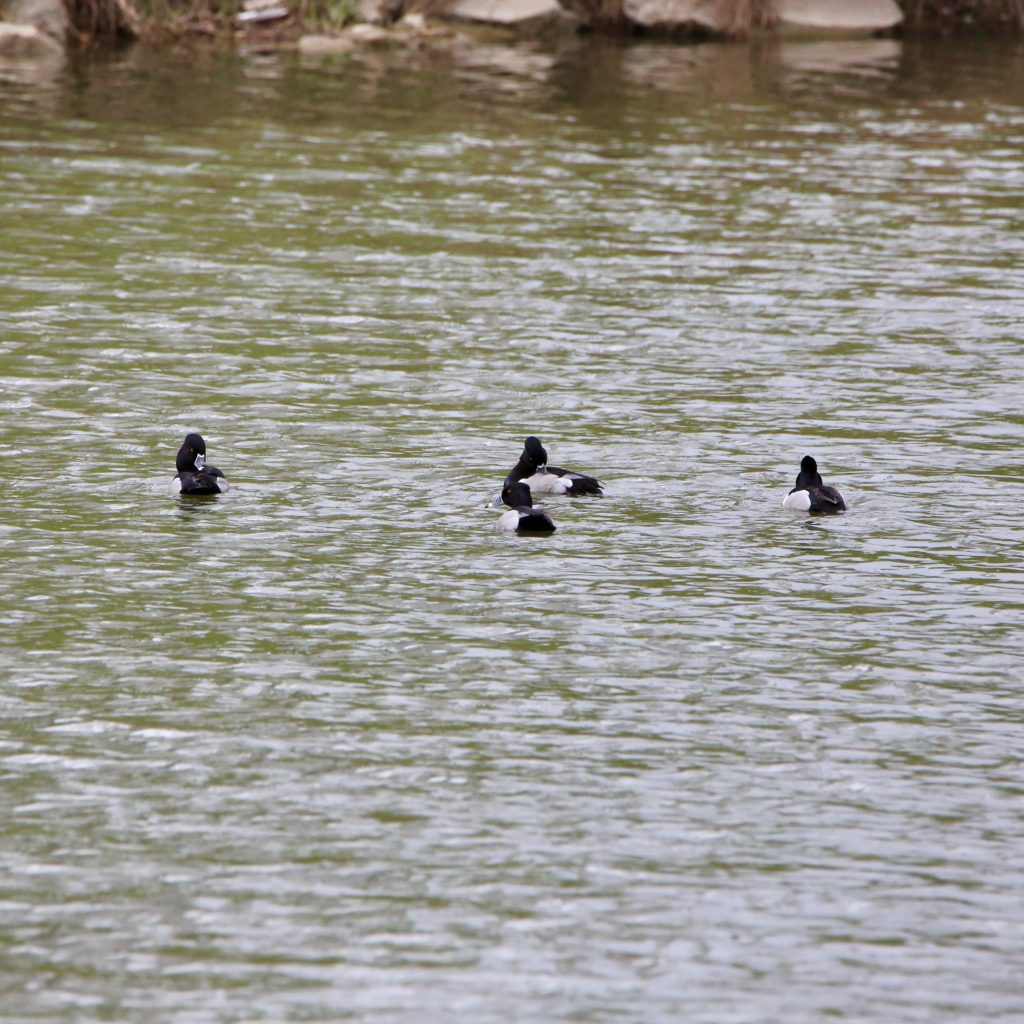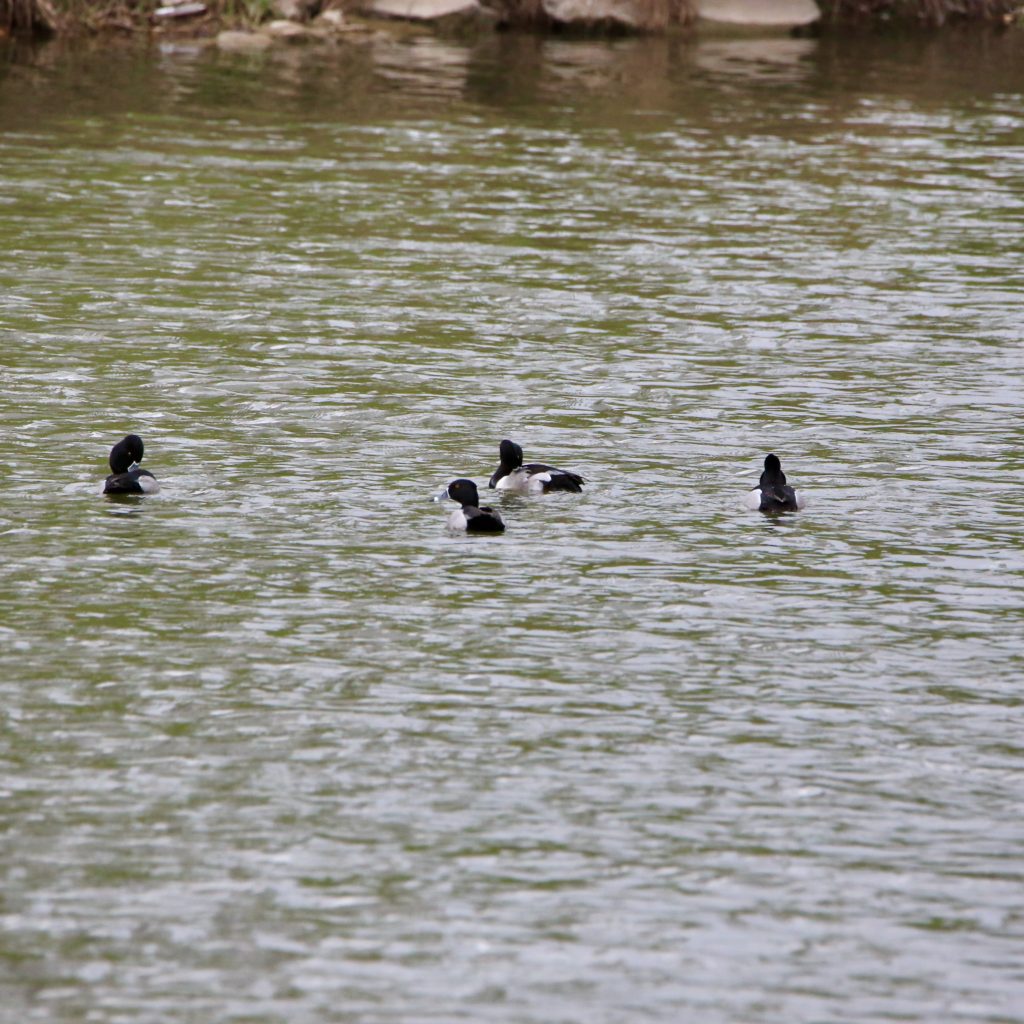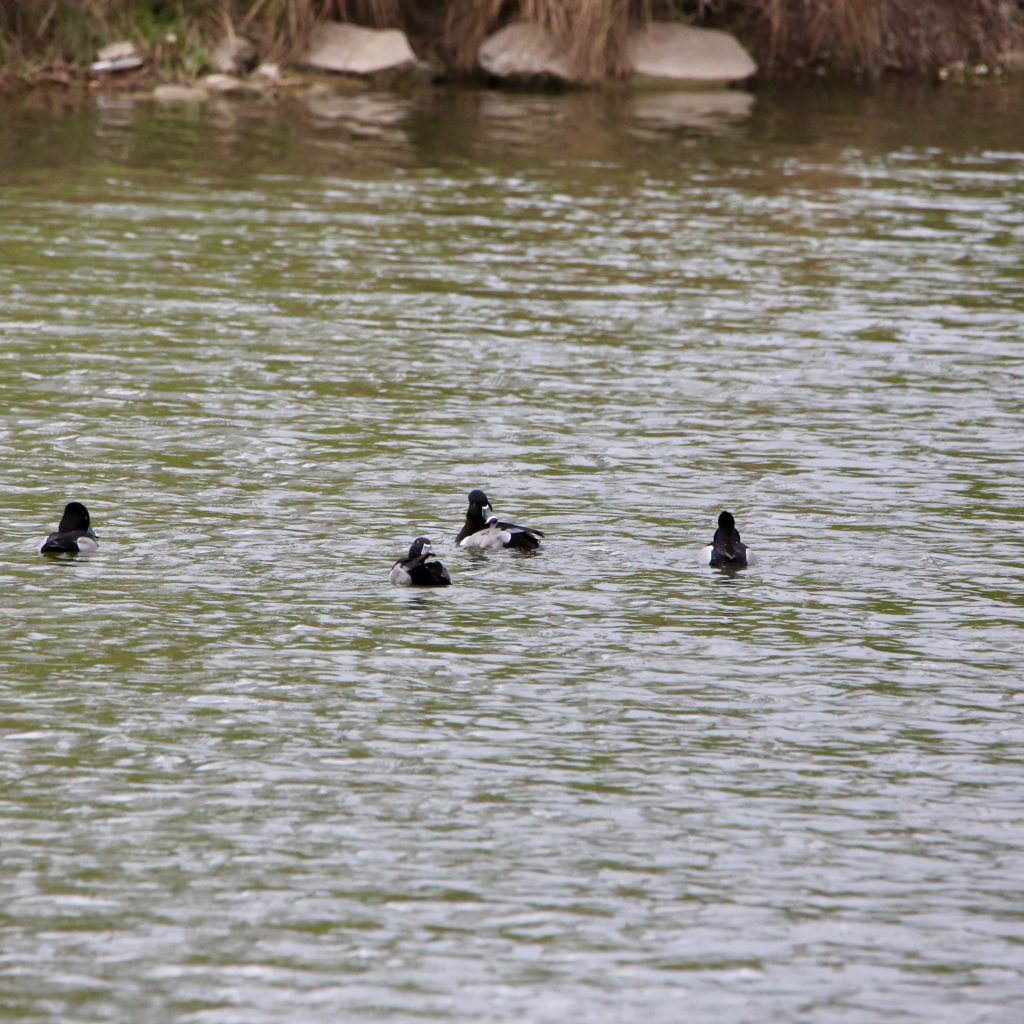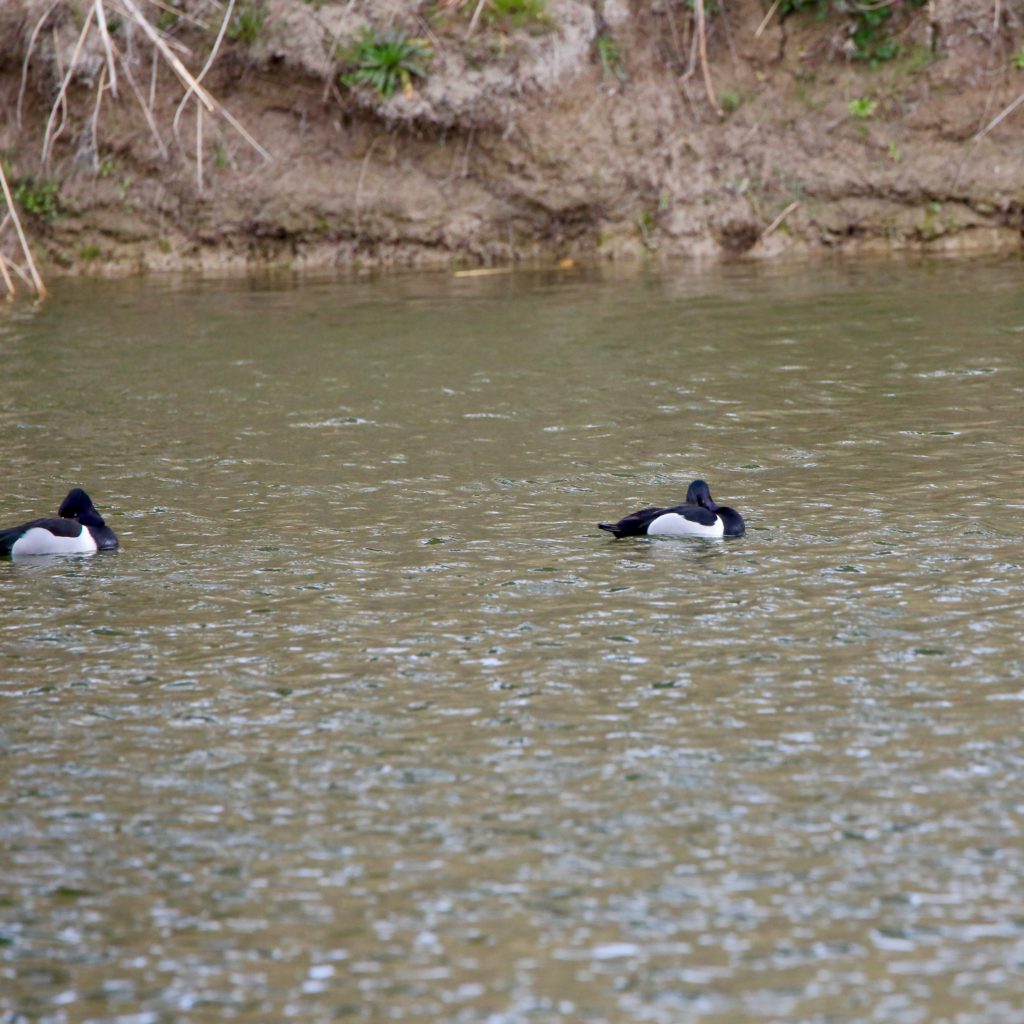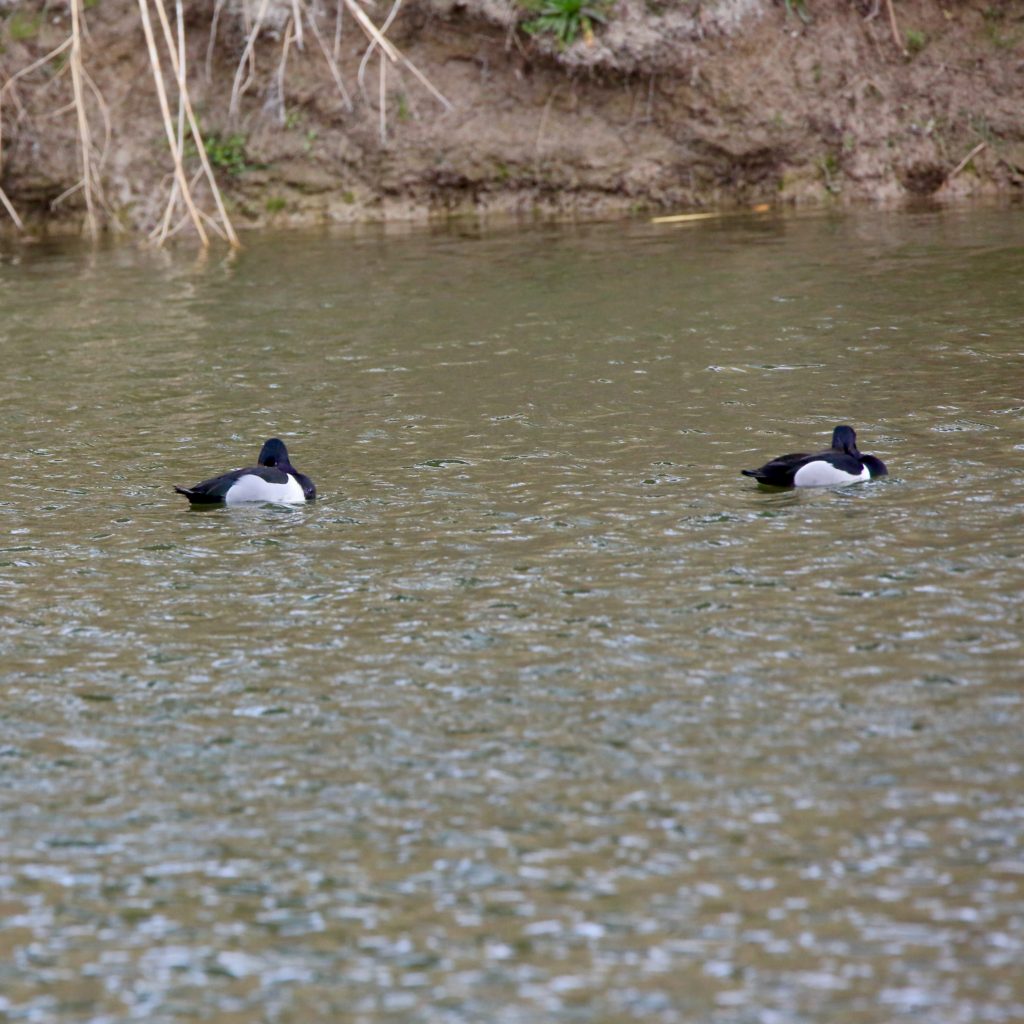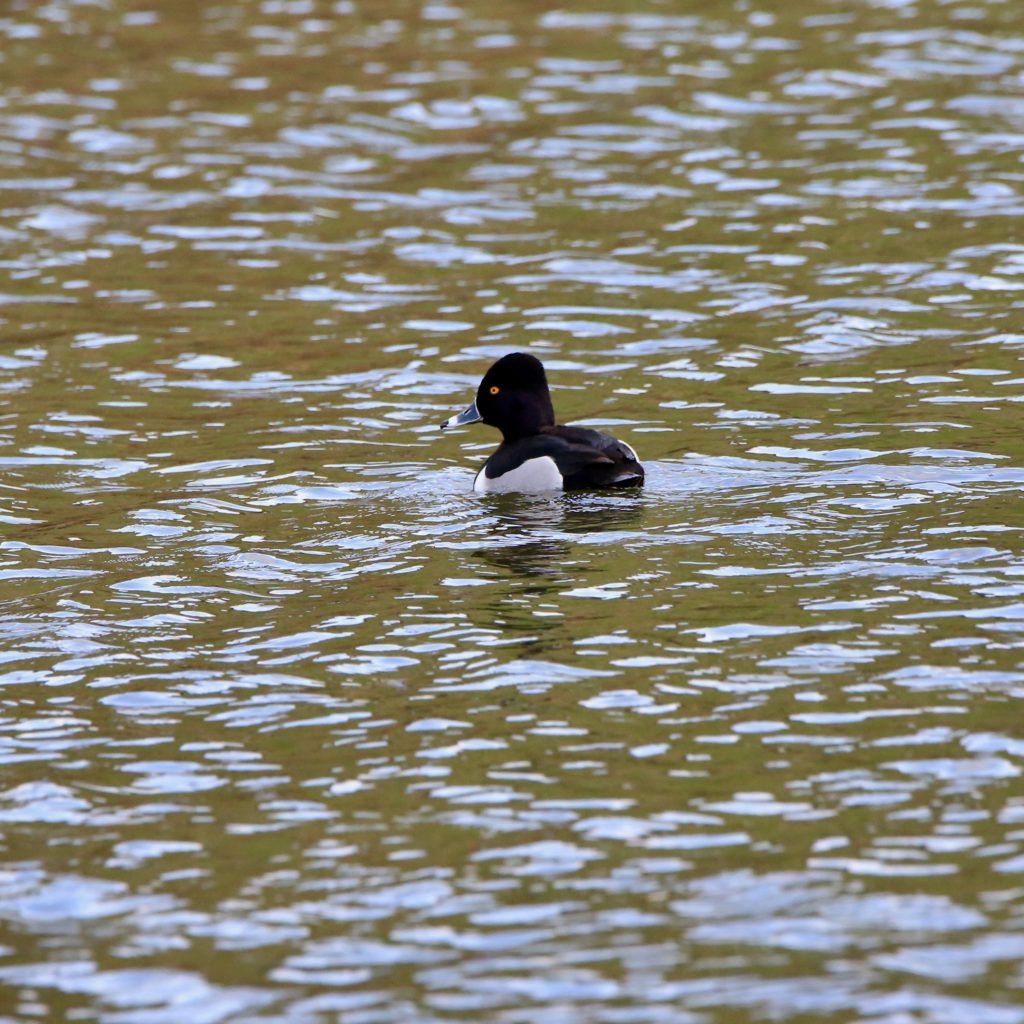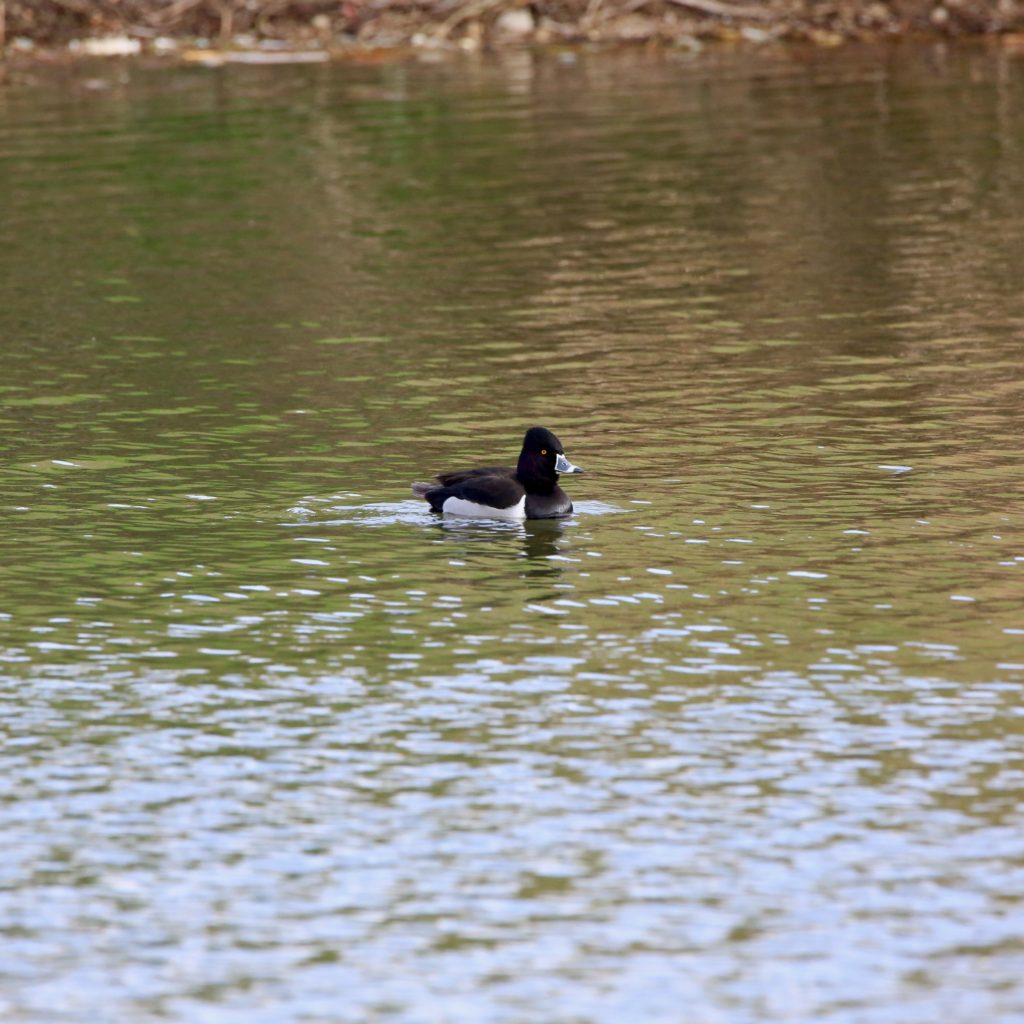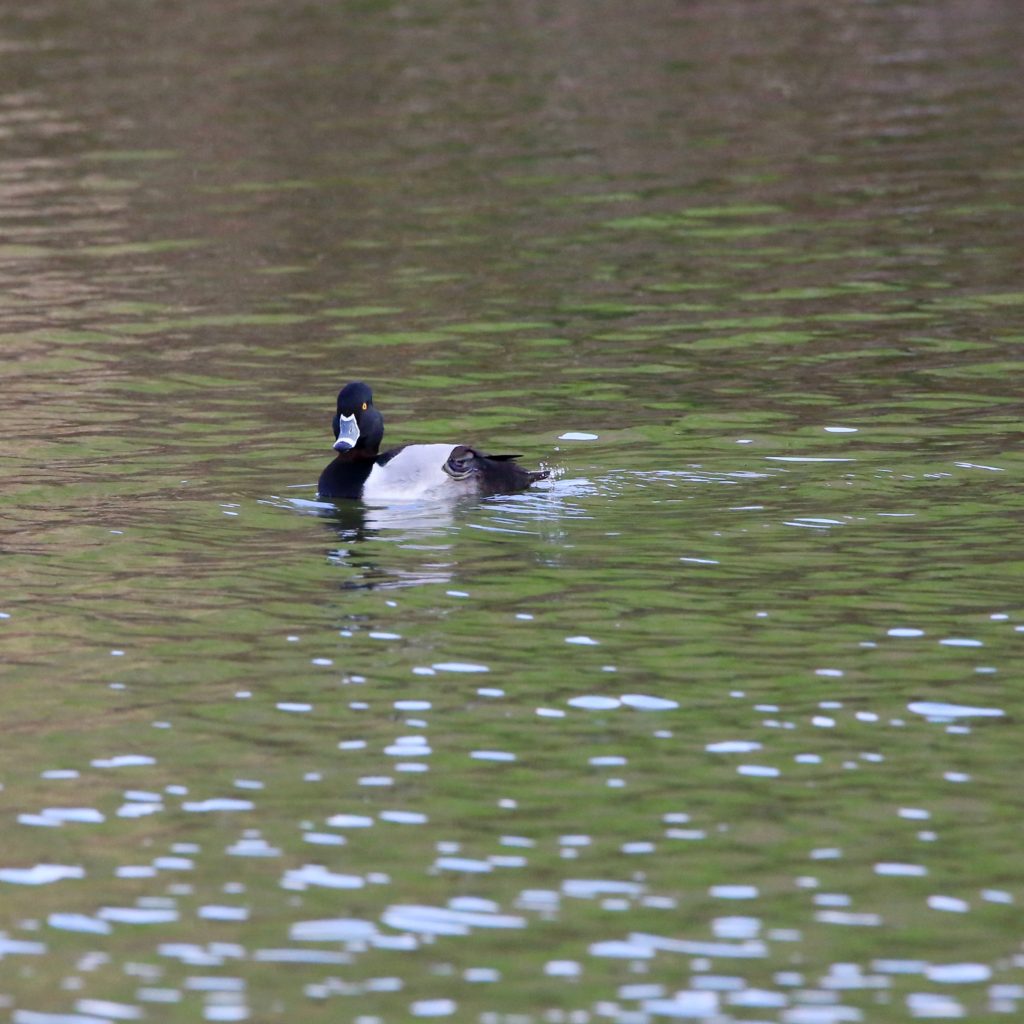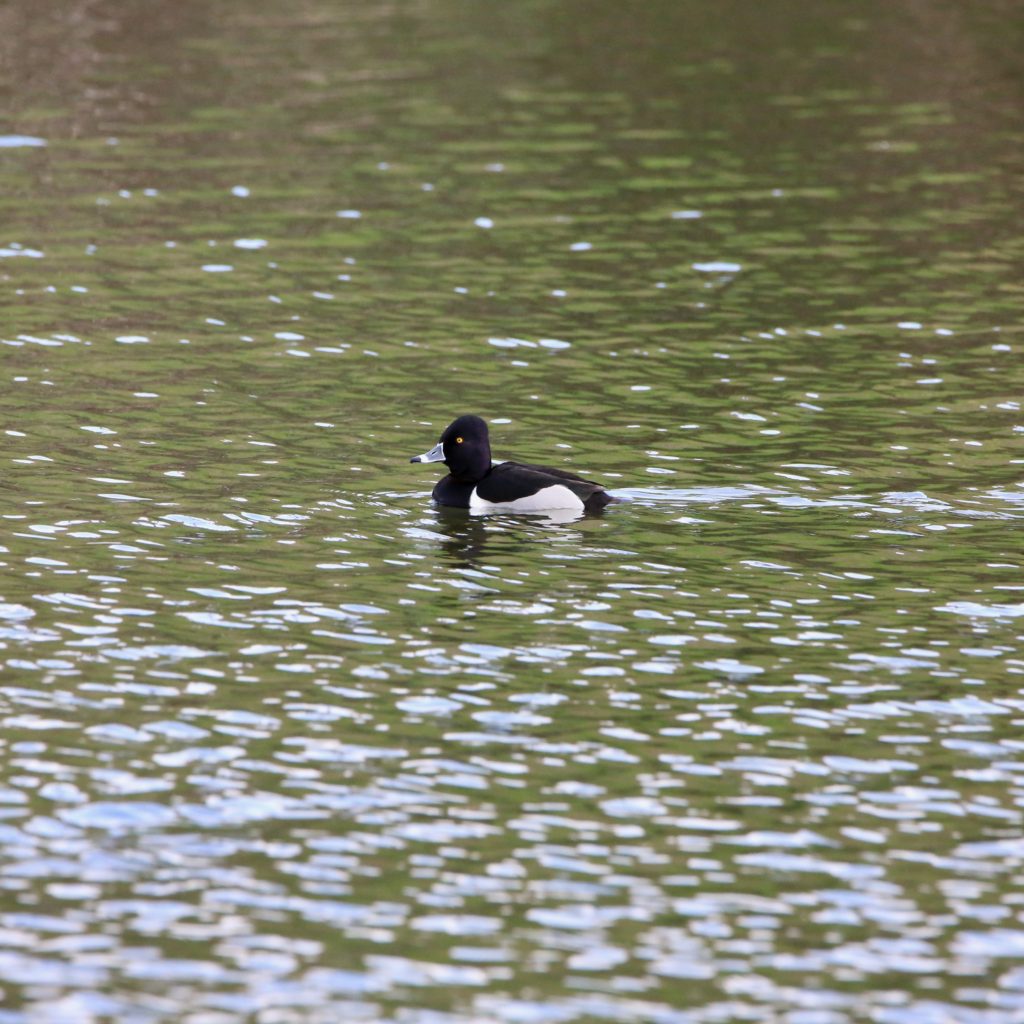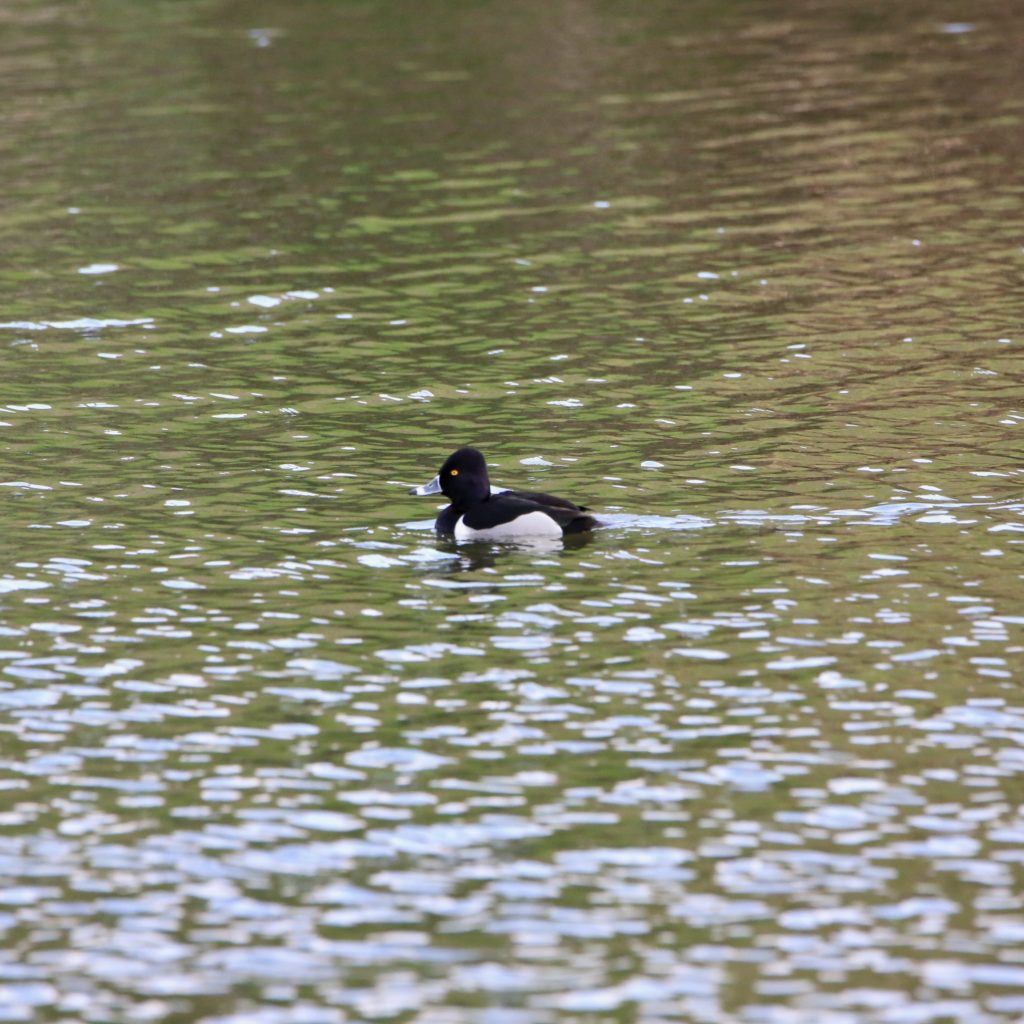
The Ring-necked Duck
A Ring-necked Duck is a fun bird to see while bird watching. Below are some tips to help you identify Ring-necked Ducks. We have also put together a list of fun Ring-necked Duck t-shirts, Ring-necked Duck bird patches, bird houses, bird feeders, binoculars, stickers and other fun bird watching items.
About Ring-necked Ducks
The Ring-necked Duck is a medium duck usually found diving in freshwater ponds and lakes. Even though it dives for its food, it can also be found in shallow ponds and beaver swamps.
Description and Identification
Male Ring-necked Ducks are very distinct in appearance with glossy blackheads and backs. They
have gray sides with brighter white spurs. Female Ring-necked ducks have a pre-dominantly
brown plumage with a white eye-ring. These ducks are 15.3-18.1 inches long, with a wingspan of
24.4-24.8 inches. With the males being larger than females, these ducks display sexual
dimorphism. Despite being name ring-necked ducks due to the cinnamon ring on their necks, the
ring is generally very difficult to spot.
Ring-necked Duck Color Pattern
A male has yellow eyes, a beaming shade of black on its head and back with white lines across its feathers and a white breast. The female, on the other hand, has a shiny rich brown color and a lighter white band than that of the male.
Ring-necked Duck Size
They are medium-sized birds. The relative size for both male and females is:
- Length 39-46cm
- Weight 700g average
- Wingspan 61-66 cm
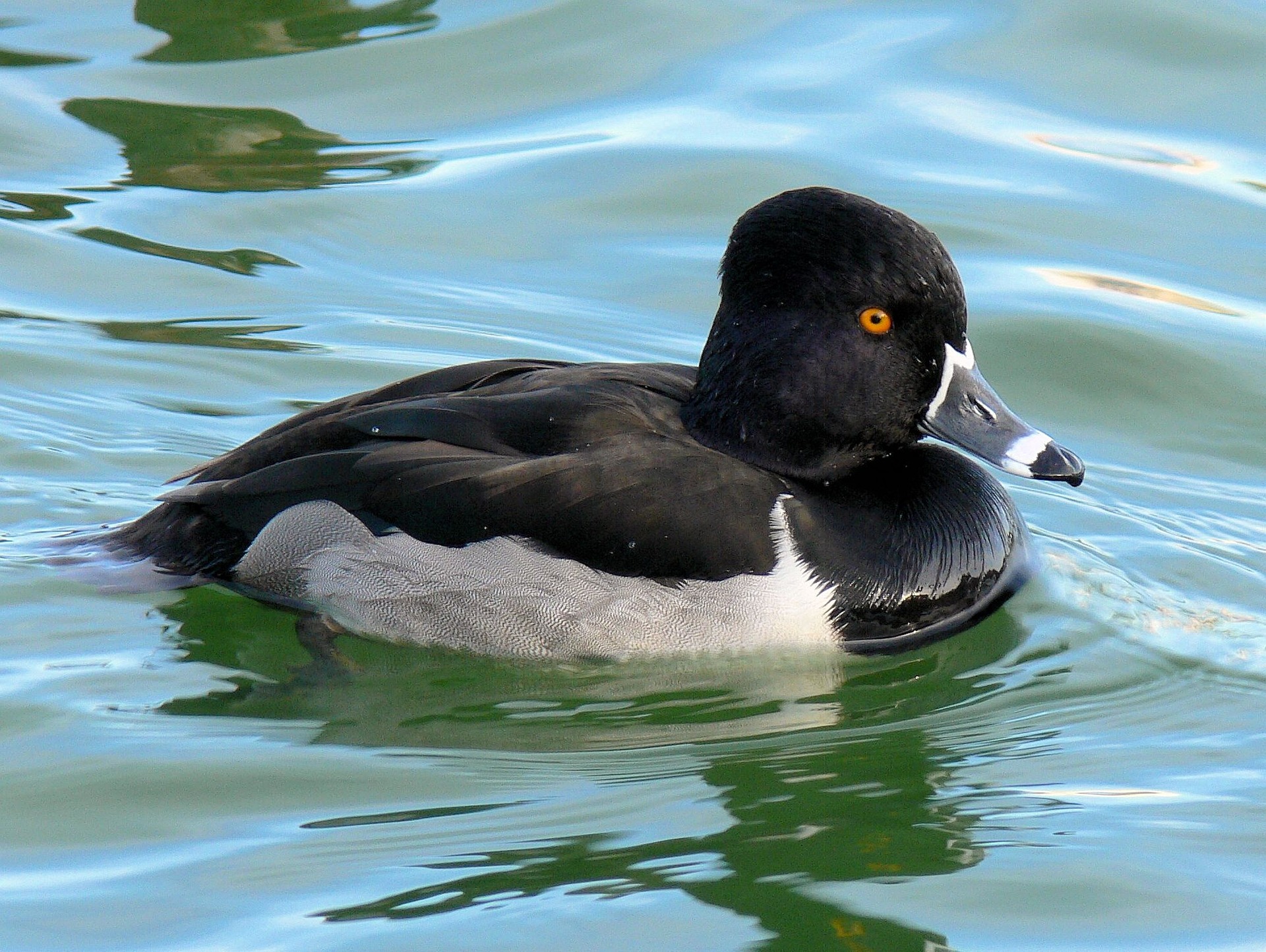
Ring-necked Duck Behavior
Ring-necked Ducks usually make angular dives into the water using their feet to propel themselves through the water to get to their food. They flock to the thousands during fall readying themselves for migration. They create breeding habitats around wooded lakes or ponds in the United States and Canada. Red-necked ducks migrate during spring and pair up during this time and stay together during the reproduction period and separate afterward.
What Ring-necked Ducks Eat
Ring-necked Ducks are omnivores that feed by dabbling at the surface or diving. The main diet
of these ducks consists of invertebrates and submerged vegetation. Adult Ring-necked Ducks
generally prefer eating plant materials, while the younglings need protein-rich animal sources of
food for proper growth. The plant portion of their diet may include stems, leaves, water lilies,
millets, sedges, and wild rice. Mollusks, snails, midges, leeches, and earthworms are also
important sources of food for them. While plant foods are important in their diets during fall
migration, adult females eat a diet mostly containing animal food during the breeding period.
Ring-necked Ducks are omnivores feeding on submerged plants or the annual rice and snails. Dragonflies, earthworms, and leeches make a diet for ducklings because of their rich protein content. Also, adult females depend entirely on animal food during the breeding season and while feeding their young while vegetation is essential during their fall migration.
Where Ring-necked Ducks Live
The breeding habitat of Ring-necked ducks is in ponds or freshwater marshes in northern North
American. Despite being diving ducks, these ducks prefer shallow waters as feeding grounds.
These ducks are considered an easy game because they return to their feeding grounds even they’re
being hunted there. Ring-necked Ducks can generally be found in regions with open water which
are emergent with dense vegetation. In winters they can commonly be spotted in shallow inland
lakes, marshes, sloughs, reservoirs, and river floodplains.
During migration, the red-necked duck stops to rest on shallow lakes and ponds with emergent vegetation. They mostly frequent freshwater lakes and bogs across the boreal forest of the northern parts of Northern America.
Range and Migration
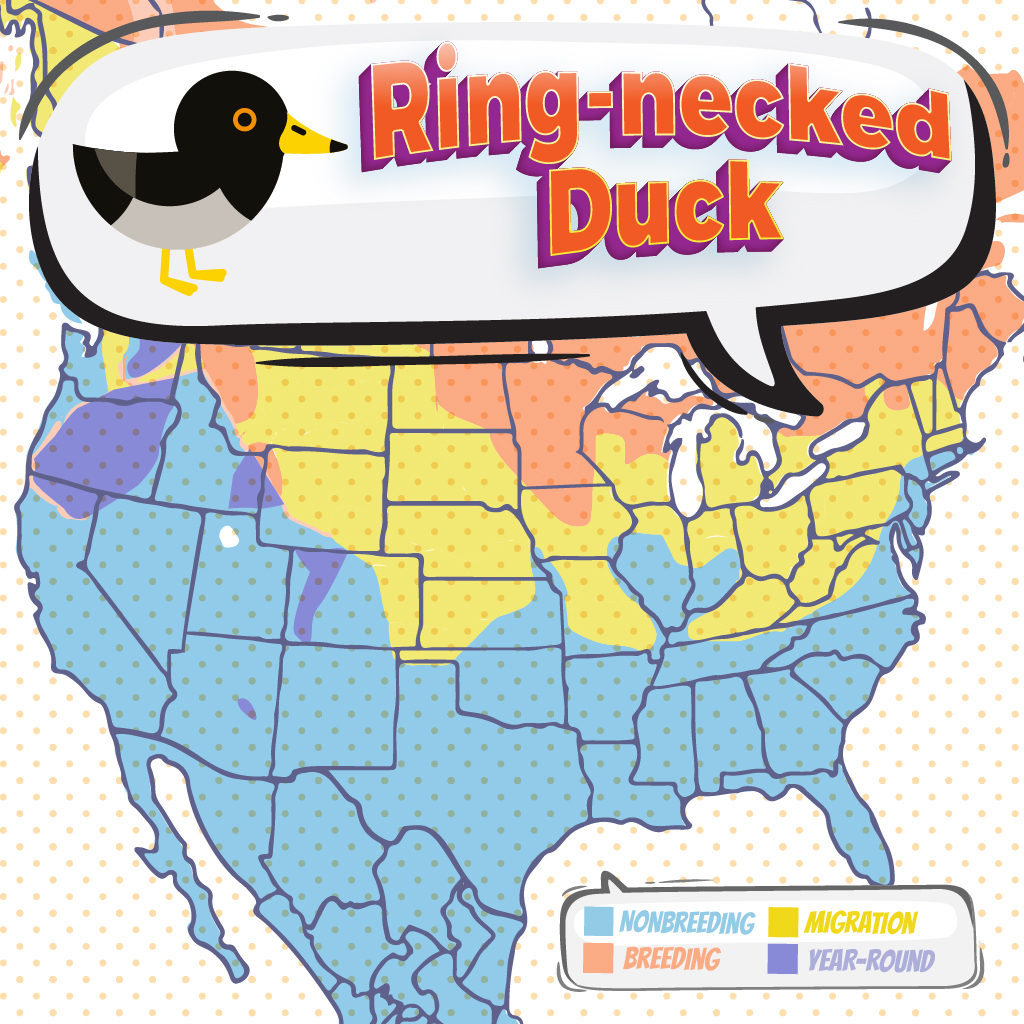
Ring-necked Ducks are small diving ducks that are widespread in northern North America. These
birds are short to medium-distance migrants. Their wintering grounds are on freshwater in the
The Caribbean, northern Central America, and southern and western North America. The Ring-necked
Ducks residing in Central Canada migrate from there to southeastern America, traveling along
Minnesota to other parts of the Midwest. In Spring, Ring-necked Ducks migrate from early February
to March, and autumn migration can last from late September to early December. These ducks are
rare vagrants to Western Europe.
Ring-necked Ducks Lifecycle
After pairing during early spring, females position their bowl-shaped nests in tall vegetation over water where she lays her 12 eggs and during the incubation period the males disappear. Incubation lasts for 28-29 days and the chick leaves for the world on day 50.
Ring-necked Ducks Nesting
Ring-necked Ducks begin to form pairs in winter. Males court the females by laying their head back
and swiftly thrusting it forward. Then they continue to nod their heads back and forth while
swimming with their head feathers erected. The nest sites of ring-necked ducks are among
emergent vegetation in marshes. Pairs might signal their spot of choice by swimming in circles
around the spot. Their nests are thoughtfully built on the water to protect the nest from predators. Until
the female lays eggs, the nests are basically just a tiny collection of plant stems. After laying eggs,
the nest is upgraded to a simple bowl with other plant material and sedges. Female ring-necked
ducks lay one egg every day for 6-14 days. This is followed by an incubation period of 25-29 days.
Ornithology
Bird Watching Academy & Camp Subscription Boxes
At Bird Watching Academy & Camp we help kids, youth, and adults get excited and involved in bird watching. We have several monthly subscription boxes that you can subscribe to. Our monthly subscription boxes help kids, youth, and adults learn about birds, bird watching, and bird conservation.
Bird Watching Binoculars for Identifying Ring-necked Ducks
The most common types of bird watching binoculars for viewing Ring-necked Ducks are 8×21 binoculars and 10×42 binoculars. Bird Watching Academy & Camp sells really nice 8×21 binoculars and 10×42 binoculars. You can view and purchase them here.
Ring-necked Duck T-shirts
If you love the Ring-necked Duck you should purchase a Bird Watching Academy & Camp T-shirt. To help support bird conservation we donate 10 percent to bird conservation activities.
Ring-necked Duck Iron On Patches
Kids, Youth, and Adults love to collect our Bird Watching Academy & Camp iron on patches. Our bird watching patches help you keep track of the birds you have seen an identified. You can also display the patches on our Bird Watching Academy & Camp banners.
The Ring-necked Duck is a great iron on patch to start your collection with. The patches are durable and can be sewn on or ironed on to just about anything.
Ring-necked Duck Stickers
Stickers are a great way for you to display your love for bird watching and the Ring-necked Duck. We sell a monthly subscription sticker pack. The sticker packs have 12 bird stickers. These sticker packs will help your kids learn new birds every month.
Best Bird House for Ring-necked Ducks
There are many types of bird houses. Building a bird house is always fun but can be frustrating. These 4 bird houses have become our favorites. Getting a bird house for kids to watch birds grow is always fun. We spent a little extra money on these bird houses but they have been worth the higher price and look great.
Bird Feeders For Ring-necked Ducks
There are many types of bird feeders. Here are our favorite bird feeders for your backyard. We use all of these bird feeders currently. Kids will have a great time watching birds eat at these bird feeders. Using this collection of bird feeders will provide a wide variety and many types of birds.


